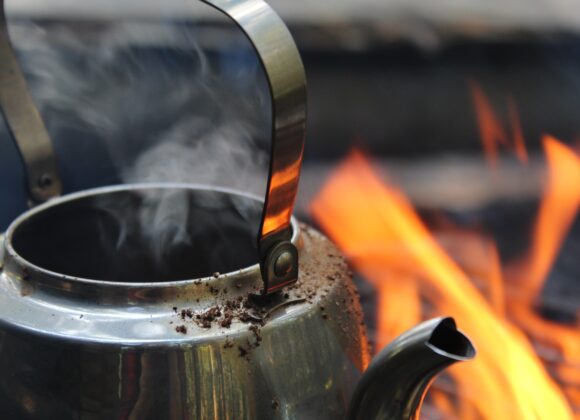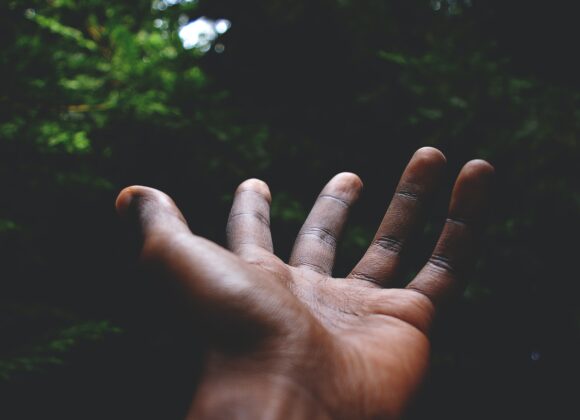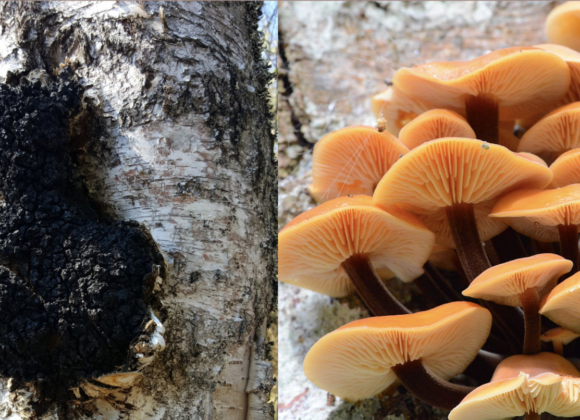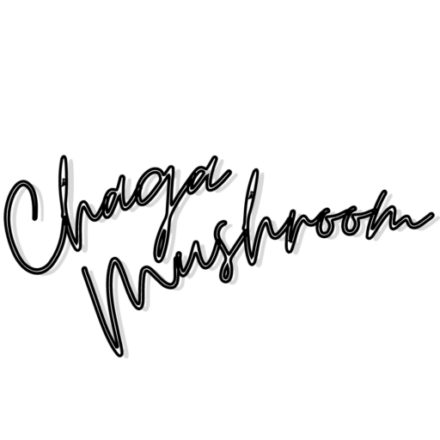Tremella Mushroom and Chaga are absolute opposites by looks. The last one is rather delicate and jelly-like, whilst Chaga, on the outside, looks like burnt charcoal and, on the inside, resembles a golden brown or amber-colored woody material. So let’s get to know the Chaga vs. Tremella pair.
What is Tremella Mushroom?
Tremella is a medicinal mushroom with a graceful appearance. It belongs to the jelly fungus family and has a unique gelatinous texture. Tremella is also known as “snow fungus,” “golden jelly fungus,” “yellow brain,” “yellow tremble,” and “witch’s butter,” all thanks to its wobbly texture.

Tremella has been celebrated in traditional Chinese medicine as an antiaging “beauty mushroom.” One of the mushroom’s polysaccharides has remarkable water retention properties, holding up five hundred times its weight in water. This is much more than our most used “rejuvenating” and moisturizing serums like hyaluronic acid and glycerin. If you ever get a chance, we suggest trying and incorporating Tremella into your skincare routine. It’s possible to apply it topically by mixing the mushroom powder into the oil of your choice (we’d recommend jojoba or shea). It is incredibly hydrating and stimulates the production of superoxide dismutase (SOD), a naturally occurring enzyme in the dermis and epidermis. SOD is an antioxidant that protects your skin from free radicals. Therefore, Tremella will act as a protective and regenerative anti-inflammatory for the skin. The mushroom also contains kojic acid, which is known to help fade skin discoloration, especially lightening dark spots.
The mushroom’s hydrating qualities are used wider than skincare. In traditional Chinese medicine, Tremella is known for replenishing bodily fluids, making it a remedy for any ailment. If you suffer from asthma and have sought treatments from traditional Chinese medicine, you’ve most likely been offered a syrup containing Tremella.
Tremella has all the immunomodulatory effects we expect from medicinal mushrooms like immunomodulating, with the potential to lower cholesterol and regulate blood sugars. In addition, the fungus has proved itself effective in regenerating damaged bone marrow caused by radiation treatments. Tremella also contains more vitamin D than any known single food source in the world.
The mushroom grows on hardwood trees in parts of the US, Taiwan mountains, and Europe. Tremella is edible in its raw form. In many Asian countries, the gelatine-like texture has been added to complement soups and desserts.
What is Chaga Mushroom?
Chaga is a polypore fungus that grows mainly on birch trees in cold climates. It grows on living trees, but it is parasitic. This means that the fungal mycelium enters the stem of a mature tree through a crack or a wound in the bark and then starts to absorb and synthesize healthy compounds that we, humans, will consume.

These mushrooms grow best on the outside of yellow and white birch trees. Chaga mushrooms are abundant in the northern hemisphere, which has higher forest altitudes, like the northern deciduous forests. Chaga thrives in cold, damp conditions and has an excellent tolerance for surviving hard winters.
Natural healers and traditional medicine practitioners have been aware of this mushroom for centuries. Recent scientific studies demonstrate the effectiveness of Chaga in treating several diseases and afflictions. The Memorial Sloan Kettering Cancer Center lists the purported uses of Chaga as treating and preventing cancer, stimulating the immune system, reducing inflammation, and protecting the liver.
As mentioned, these medicinal mushrooms are not edible in the standard method. Instead, their properties need to be extracted. The extraction requires prolonged simmering or soaking. This process makes the beneficial components bioavailable to the human body, which means the body can absorb the nutrients.
Related: Chaga Mushroom Extraction Methods
Like all the other medicinal mushrooms, Chaga has incredible immunomodulating powers. Chaga’s polysaccharides, specifically beta-glucans, can increase the production of lymphocytes (a type of white blood cell that regulate the immune response to infectious microorganisms and other foreign substances). Chaga is also known as one of nature’s richest sources of antioxidants. Antioxidants protect your body from free radicals, which otherwise would lead to cell degeneration (chronic fatigue, chronic pain, chronic illness, and cancer).
The abundance of betulin, which gives antitumor and anticancer properties. Betulin produces a derivative called betulinic acid, which is antibacterial, antiviral, anti-inflammatory, and antioxidant, with adaptogenic properties. This allows Chaga to balance and restore your entire system, which can lead you to function at your highest potential!
Related: 5 Benefits of Chaga for Skin Health
Chaga vs. Tremella, which one is more beneficial?
Tremella, as we learned, has unique water retention properties. Remarkably, it can hold up to five hundred times its weight in water. This makes it an incredible “beauty mushroom,” helping to improve your skin quality, resulting in a younger-looking, glowy complexion. The mushroom will also help to protect your body against pathogens and alleviate any issues with chest congestion or asthma.
Chaga, in contrast, is famous for being one of the highest natural antioxidant sources in the world. In addition, it’s abundant in betulin, which gives medicinal mushroom antitumor and anticancer properties. Betulinic acid makes Chaga have antibacterial, antiviral, anti-inflammatory, and adaptogenic properties. Therefore, if you wish to prevent or cure a cold, age gracefully with shiny hair and glowing skin, as well as lower inflammation in your body, Chaga will be your savior!
Therefore if you’re looking for an ultimate health and beauty cocktail, we’d suggest you add both to your health routine. If you need to pick one, we’d say that Chaga covers more ground regarding health benefits, but if you’re looking to enhance your physical appearance — applying Tremella topically will give you instant results.
Chaga vs. Tremella accessibility
When it comes to Chaga, it’s essential to remember that Chaga gets most of its nutritional value from its host – the Birch tree. Therefore, the medicinal value of Chaga, harvested from trees other than birch, may be entirely different. You should especially pay attention to your Chaga being wild harvested, as we’ve heard of Chaga grown in laboratories.
This has become a bigger issue over the last few years as Chaga has gained more mainstream popularity. Business-motivated corporates are trying to cut corners and grow Chaga faster and more efficiently indoors. This means your bought Chaga possesses no health benefits but is most likely marketed as a health product.
Tremella is surprisingly growing naturally in many different parts of the world. So before placing an order, research and find out if you can source the mushroom locally. Unfortunately, we haven’t found any Tremella grow kits on the market yet, but you’ll easily find the mushroom in powder form or as capsules online.










